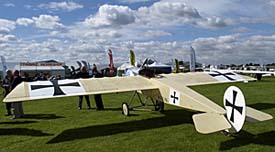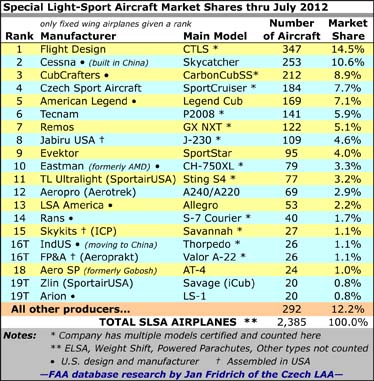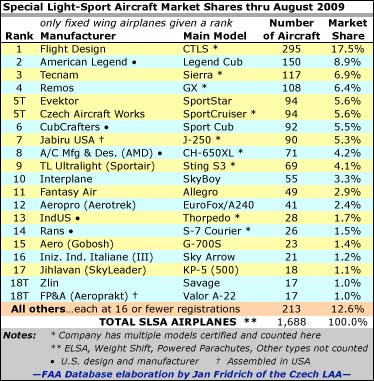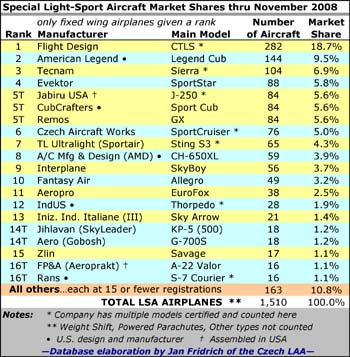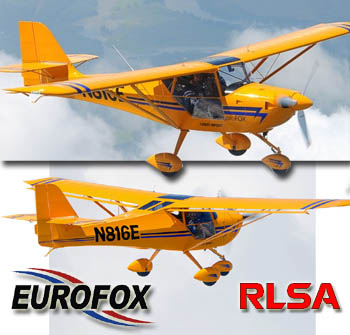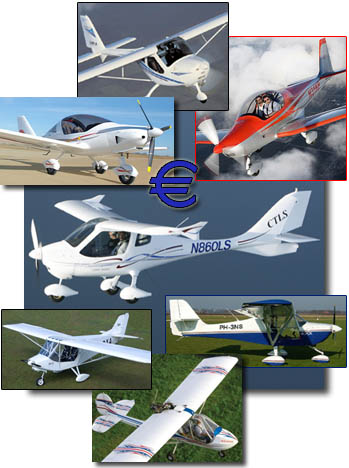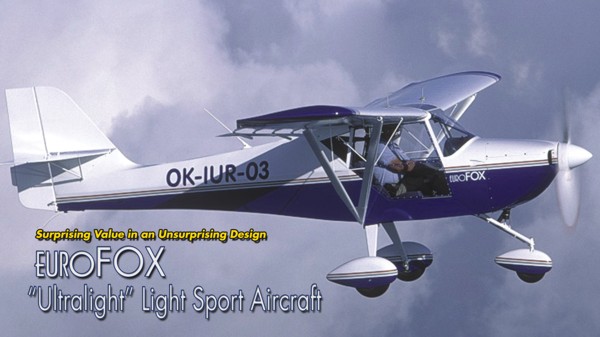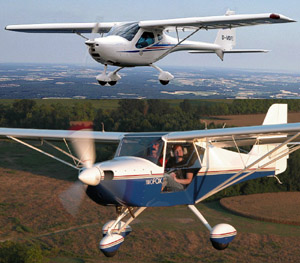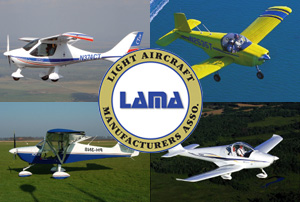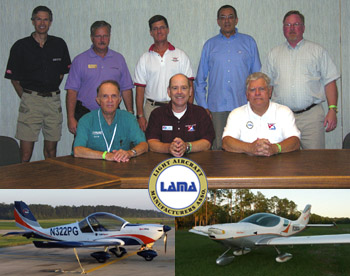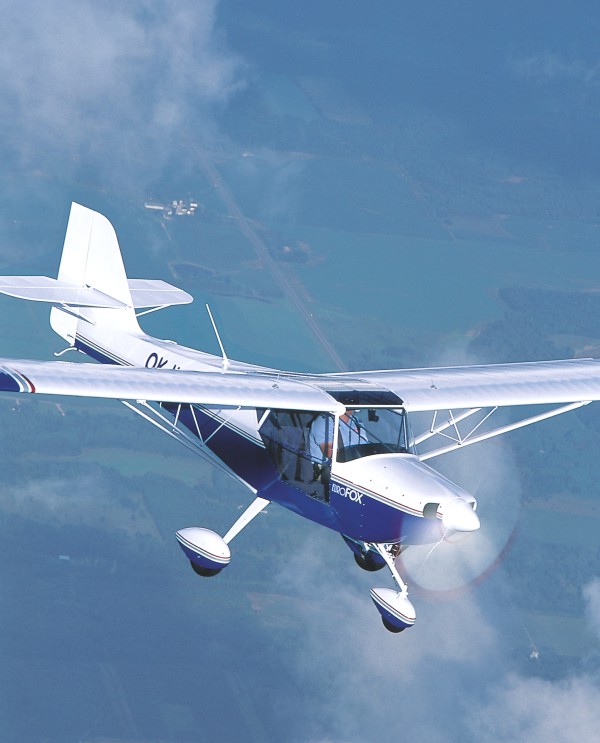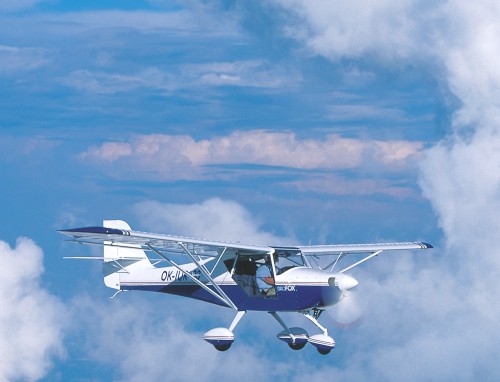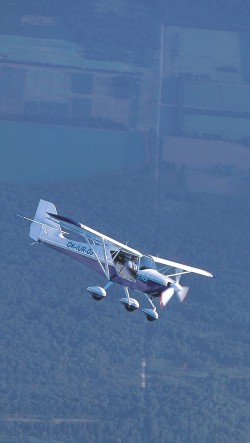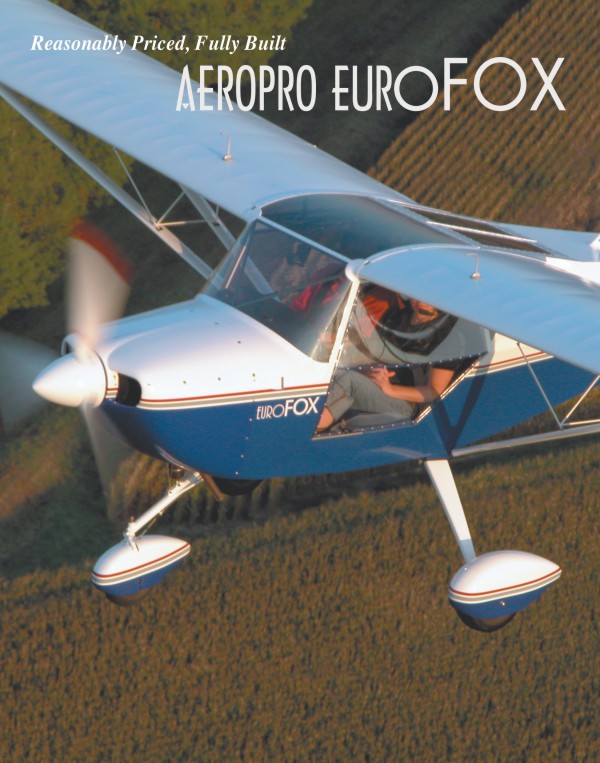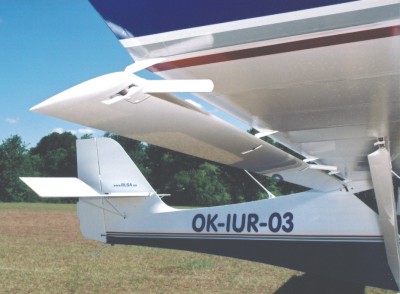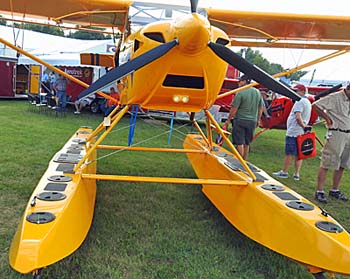
You have more privileges than you may know with your Light-Sport Aircraft. One of the more misunderstood aspects of FAA’s sweeping 2004 Sport Pilot/Light-Sport Aircraft regulation is ELSA or Experimental Light-Sport Aircraft. Some people call these “kit” LSA. While they can be sold that way, no percentage applies so a manufacturer could call an ELSA a kit by merely having the buyer apply a single decal. To gain its Special Airworthiness certificate, an ELSA must first be a bolt-for-bolt copy of the manufacturer’s Special or fully-built version of LSA. However, once certificated, the owner can begin to make changes on his or her own. They can also become qualified to do all manner of maintenance themselves, assuming they so desire. An Airframe and Powerplant mechanic (A&P) or Light-Sport Repairman – Mechanic (LSR-M) can also work on ELSA as they can SLSA. Once certificated and in his possession the owner can change to ELSA status allowing him or her to do almost anything …change avionics or even swap engines.


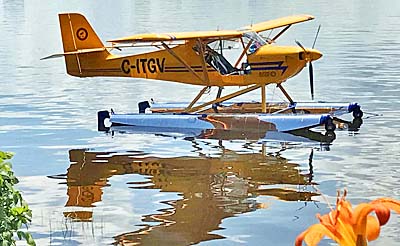 You have more privileges than you may know with your Light-Sport Aircraft.
One of the more misunderstood aspects of FAA's sweeping 2004 Sport Pilot/Light-Sport Aircraft regulation is ELSA or Experimental Light-Sport Aircraft.
Some people call these "kit" LSA. While they can be sold that way, no percentage applies so a manufacturer could call an ELSA a kit by merely having the buyer apply a single decal.
To gain its Special Airworthiness certificate, an ELSA must first be a bolt-for-bolt copy of the manufacturer's Special or fully-built version of LSA. However, once certificated, the owner can begin to make changes on his or her own. They can also become qualified to do all manner of maintenance themselves, assuming they so desire. An Airframe and Powerplant mechanic (A&P) or Light-Sport Repairman – Mechanic (LSR-M) can also work on ELSA as they can SLSA.
You have more privileges than you may know with your Light-Sport Aircraft.
One of the more misunderstood aspects of FAA's sweeping 2004 Sport Pilot/Light-Sport Aircraft regulation is ELSA or Experimental Light-Sport Aircraft.
Some people call these "kit" LSA. While they can be sold that way, no percentage applies so a manufacturer could call an ELSA a kit by merely having the buyer apply a single decal.
To gain its Special Airworthiness certificate, an ELSA must first be a bolt-for-bolt copy of the manufacturer's Special or fully-built version of LSA. However, once certificated, the owner can begin to make changes on his or her own. They can also become qualified to do all manner of maintenance themselves, assuming they so desire. An Airframe and Powerplant mechanic (A&P) or Light-Sport Repairman – Mechanic (LSR-M) can also work on ELSA as they can SLSA.
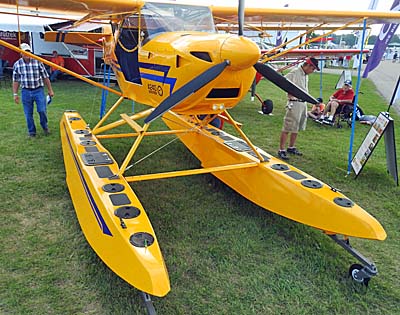
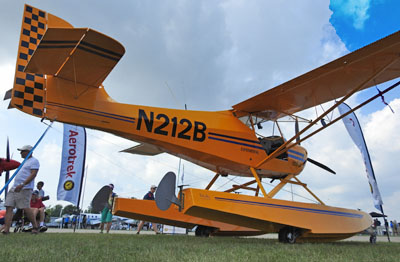 "I deliver on wheels but for $300, an owner can add the float option, which provides mounting brackets attached to specially-reinforced fuselage points.”
Adding floats is then a matter of taking the newly certificated Aerotrek to a qualified installer who can work out the hardware and bracketry to mount straight (no wheels) or amphibious floats. Most sellers know of a few businesses who specialize in such work.
A proper installer does more than supply the hardware and perform the installation. They also do critical measurements and calculations to establish the correct angle of incidence. On floats you cannot rotate for takeoff as you do on a landplane so whomever does this install needs to evaluate each aircraft based on its weight and balance in order to assure the right mounting position.
This specialized skill is one obvious reason why Rollison does not sell on floats and why you must shift to ELSA status after taking delivery of your Aerotrek. To learn more about Aerotrek aircraft through many articles and videos, please
"I deliver on wheels but for $300, an owner can add the float option, which provides mounting brackets attached to specially-reinforced fuselage points.”
Adding floats is then a matter of taking the newly certificated Aerotrek to a qualified installer who can work out the hardware and bracketry to mount straight (no wheels) or amphibious floats. Most sellers know of a few businesses who specialize in such work.
A proper installer does more than supply the hardware and perform the installation. They also do critical measurements and calculations to establish the correct angle of incidence. On floats you cannot rotate for takeoff as you do on a landplane so whomever does this install needs to evaluate each aircraft based on its weight and balance in order to assure the right mounting position.
This specialized skill is one obvious reason why Rollison does not sell on floats and why you must shift to ELSA status after taking delivery of your Aerotrek. To learn more about Aerotrek aircraft through many articles and videos, please 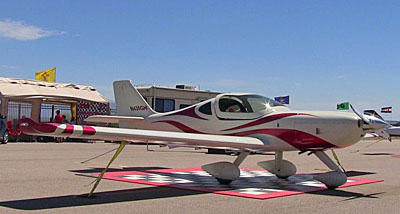
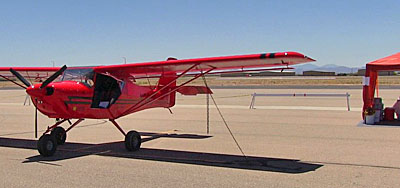
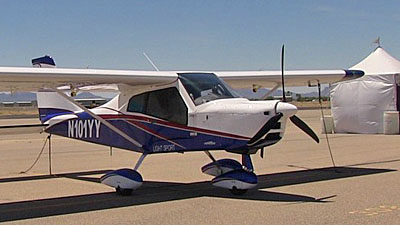
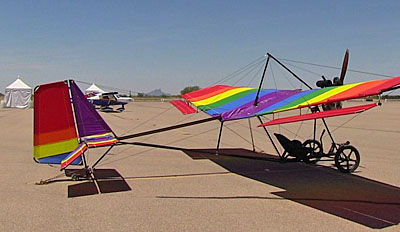
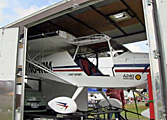
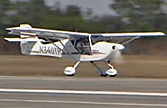
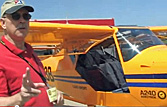
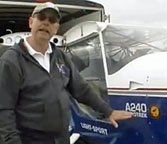
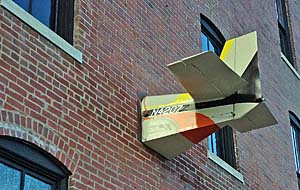
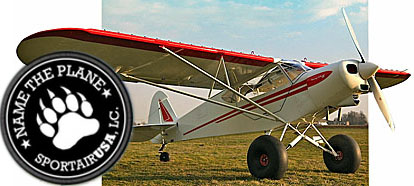
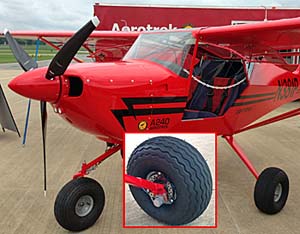
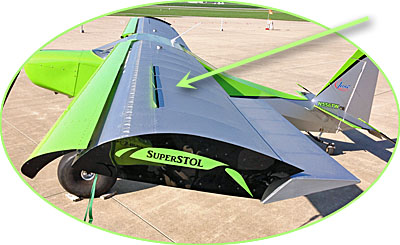
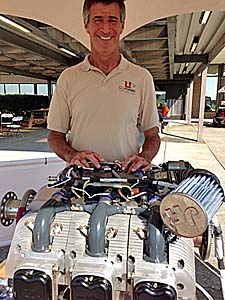
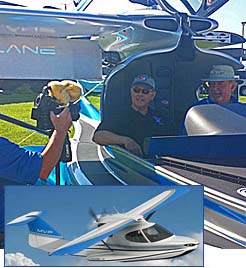

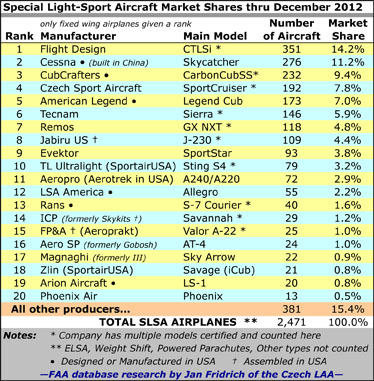 Our annual review of LSA Market Share brings our updated fleet chart and a second chart showing prior-year registrations. While sales of new SLSA remains below par, the market appears to be experiencing spotty but regular recovery from earlier low points. The first half the year foretold a better recovery but the last half of the year stalled somewhat. Regardless, based on traffic to this website, LSA interest is higher than ever. For January 2013, ByDanJohnson.com set all-time records in Unique Visitors and all other measuring criteria Thank you for your support!
2012 Market Share report — Nearby, we present our standard market share numbers. Our original chart remains consistent, illustrating the "installed base," or "fleet size." Because we know many of you seek recent-year information we are repeating the Calendar Year chart that debuted last year.
Our annual review of LSA Market Share brings our updated fleet chart and a second chart showing prior-year registrations. While sales of new SLSA remains below par, the market appears to be experiencing spotty but regular recovery from earlier low points. The first half the year foretold a better recovery but the last half of the year stalled somewhat. Regardless, based on traffic to this website, LSA interest is higher than ever. For January 2013, ByDanJohnson.com set all-time records in Unique Visitors and all other measuring criteria Thank you for your support!
2012 Market Share report — Nearby, we present our standard market share numbers. Our original chart remains consistent, illustrating the "installed base," or "fleet size." Because we know many of you seek recent-year information we are repeating the Calendar Year chart that debuted last year.
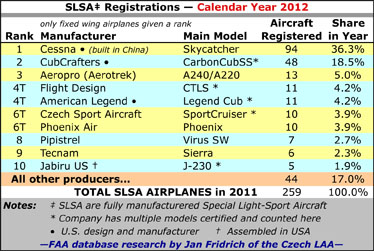 For the second year in a row
For the second year in a row 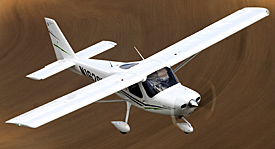 Perhaps the most noteworthy story in 2012 registrations is an even better performance by
Perhaps the most noteworthy story in 2012 registrations is an even better performance by 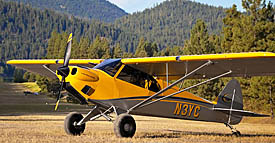 A remarkably steady climber is
A remarkably steady climber is 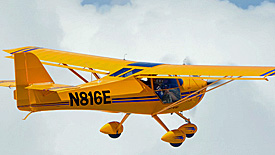 Other top guns in 2012 include perennial leaders like
Other top guns in 2012 include perennial leaders like 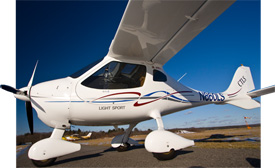 A member of the exclusive Over-100 Club listing only eight SLSA producers is
A member of the exclusive Over-100 Club listing only eight SLSA producers is 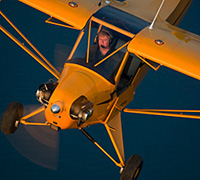 Unfortunately, one former high flyer, Remos, lost its U.S representative and has become very quiet though earlier this year, their CEO said they had recovered from the previous CEO's high-spending ways.
We are watching a few companies not on our fleet chart. One new entry to the SLSA scene is
Unfortunately, one former high flyer, Remos, lost its U.S representative and has become very quiet though earlier this year, their CEO said they had recovered from the previous CEO's high-spending ways.
We are watching a few companies not on our fleet chart. One new entry to the SLSA scene is 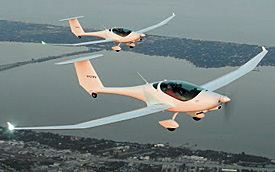 We are also watching the pulse on seaplanes lead this year by
We are also watching the pulse on seaplanes lead this year by 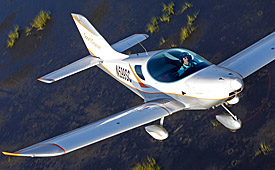 As I have said for years, a loud shout-out is owed to Jan Fridrich of the Czech LAA for the LSA Market Share report. Jan is also head of
As I have said for years, a loud shout-out is owed to Jan Fridrich of the Czech LAA for the LSA Market Share report. Jan is also head of 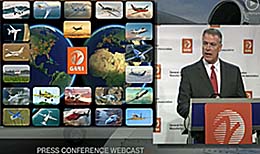 Notice: As always, we observe for you that all numbers here are derived from FAA's N-number registration database and are subject to data entry errors. Figures presented are not identical to sales recorded by the companies though over time the numbers draw closer.
UPDATE 2/13/13: GAMA held a press conference today where they released their industry numbers. Get more on GAMA
Notice: As always, we observe for you that all numbers here are derived from FAA's N-number registration database and are subject to data entry errors. Figures presented are not identical to sales recorded by the companies though over time the numbers draw closer.
UPDATE 2/13/13: GAMA held a press conference today where they released their industry numbers. Get more on GAMA 
